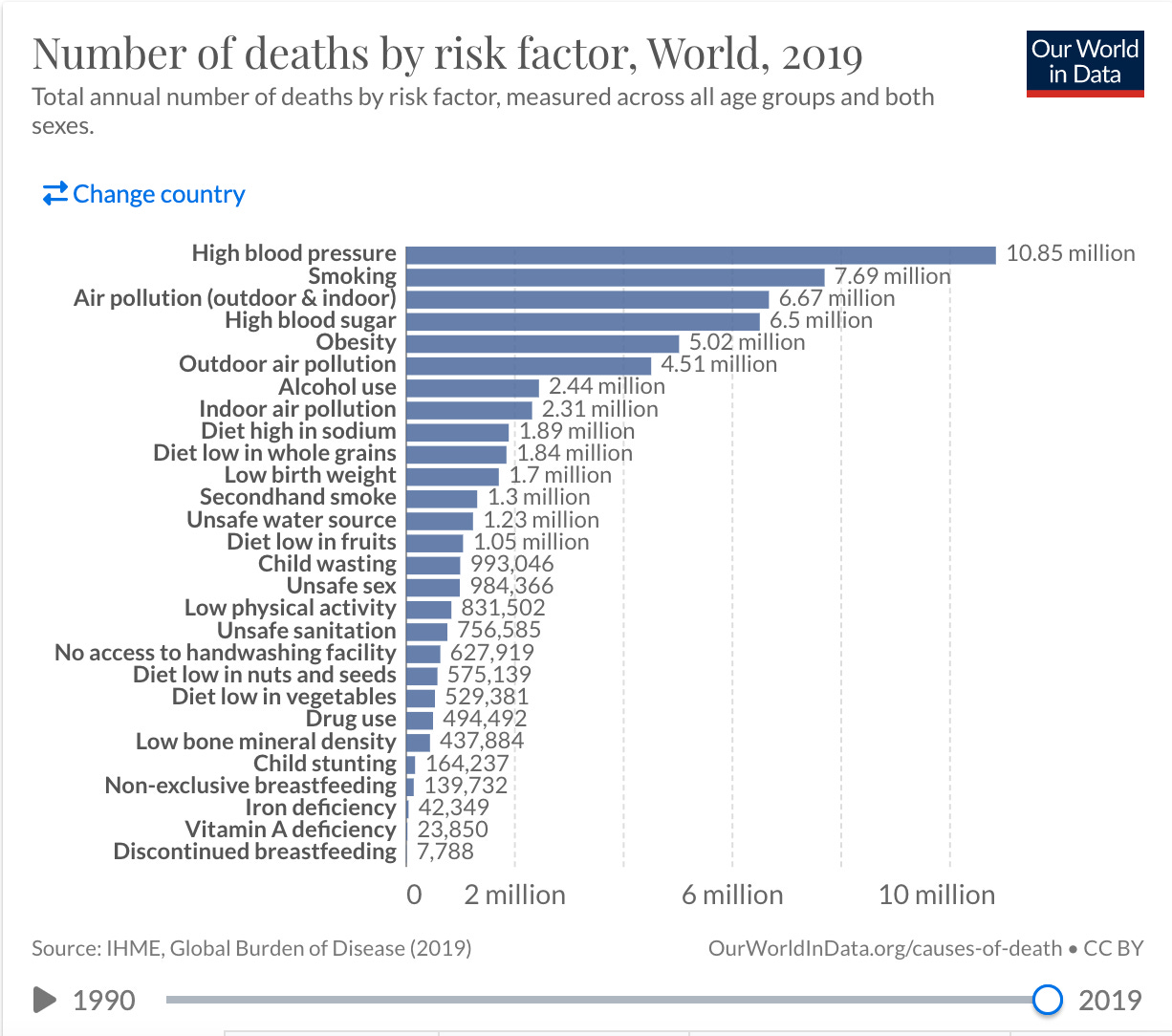HOW TO BE FREE FROM NICOTINE
IF YOU FEEL YOU CAN'T QUIT SMOKING OR VAPING, THIS IS FOR YOU...
WATCH OUT. THEY’RE WATCHING…
If you find this article helpful, please consider sharing it with a friend.
You never know how you might help with just a click of a button.
EVERYONE KNOWS SMOKING KILLS
Smoking is the second cause of death globally.
“Smoking causes cancer, heart disease, stroke, lung diseases, diabetes, and chronic obstructive pulmonary disease (COPD), which includes emphysema and chronic bronchitis. Smoking also increases risk for tuberculosis, certain eye diseases, and problems of the immune system, including rheumatoid arthritis.”
Cigarettes produce more than 7000 chemicals, of which 69 are carcinogenic.
IS VAPING BETTER THAN SMOKING?
VAPES may not produce 7000 chemicals but they still contain propylene glycol, vegetable glycerine, flavourings and nicotine.
NICOTINE is highly addictive and harmful substance
It increases the risk of cardiovascular, respiratory, gastrointestinal disorders
decreases immune response
impacts reproductive health negatively
causes oxidative stress & cell death
Contributes to DNA mutation & cancer
The long term effects of PROPYLENE GLYCOL in the lungs are unknown.
“Earlier reports indicated increased upper airway symptoms and lower lung functions for entertainment workers chronically exposed to theatrical fogs, composed of propylene glycol and other glycols”
“propylene glycol and glycerol … could change the normal and optimal pulmonary response to pathogens, irritants and allergens.”
VEGETABLE GLYCERINE is a byproduct of soap making. It is used to retain moisture. It is considered food grade safe, however, its impact when breathed is not well studied.
See other ingredients in e-cigarettes.
WHAT IF YOU QUIT…?
CONSIDER THESE TIPS TO QUIT…
Quitting smoking or vaping is not easy but you have done difficult things before in your life and you deserve to be healthy again. So ask yourself, what makes quitting worth your while? Make a list of your personal reasons…
Ask yourself: “What does smoking or vaping do for me?” (what benefits do I get out of it?”) Keep on repeating the question with every answer you give until you reach your highest value. Then put on your creativity hat and ask yourself “how can I achieve this value by engaging in an alternative activity that doesn’t harm my health?”
Make a public commitment by announcing your decision to quit to friends, co-workers and family
Choose a quitting date. Select a low stress period to quit (holiday). The toughest period is the first two weeks. (Nicotine clears out of your body within the first week if you go cold turkey)
Make a quitting plan. Decide whether you will quit cold turkey, gradually cut down to quit or use nicotine replacement therapy (NRT) (see all options and doses in the linked document).
First, consider the side effects of different NRTs.
If you choose nicotine replacement therapy (NRT), how you taper* off the nicotine will be crucial for success.
*Remember to consult a health care provider to determine the right starting dose - which depends on your cigarette/vape consumption level- and how to taper it.
Your body absorbs 1-2 mg of nicotine from each cigarette.
Vapes come in several doses of nicotine: 0 mg/ml, 3 mg/ml, 6 mg/ml, 12 mg/ml, 18 mg/ml, and 20 mg/ml. (The amount of nicotine you get depends on how many ml of liquid you smoke)
Nicotine patches come in 3 doses for each delivery method*:
24hr-delivery method: 21 mg, 14 mg, 7 mg
16hr-delivery method*: 15 mg, 10 mg, 5 mg
*Unless you wake up in the middle of the night to smoke or vape, you may want to use the 16 hr-delivery method instead of the 24hr one as your body is already not used to getting nicotine at night so why give it nicotine at that time…
HOW TO TAPER?
The common approach is to use the LINEAR TAPERING METHOD which means reducing the same amount of nicotine from stage to stage. Each stage could last 2-4 weeks depending on your tolerance level.
For example,
Stage 1: 15 mg nicotine patch
Stage 2: 10 mg patch
Stage 3: 5 mg patch
Stage 4: Stop NRT
The problem with this approach is that it doesn’t take into account the effect of the nicotine dose on your brain, with smaller doses having a larger effect than larger doses proportionally. Although you may not be very bothered when you switch from a 15 mg to 10 mg patch, you might find it harder to go from 10 to 5 mg patch and you might find it even harder to go from 5 mg to no patch at all.
The best way to taper nicotine is to use the HYPERBOLIC TAPERING METHOD, which means making smaller reductions of the addictive substance as time passes to prevent the stronger withdrawal symptoms that occur as the dose of the addictive substance decreases in the body.
For example,
Stage 1: 15 mg patch
Stage 2: 10 mg patch
Stage 3: 5 mg patch + 3 nasal sprays in each nostrils delivering 3 mg of nicotine
Stage 4: 5 mg patch
Stage 5: 4 nasal sprays in each nostril delivering 4 mg of nicotine
Stage 6: 3 nasal sprays in each nostril delivering 3 mg of nicotine
Stage 7: 2 nasal sprays in each nostril delivering 2 mg of nicotine
Stage 8: 1 nasal spray in each nostril delivering 1 mg of nicotine
Stage 9: Stop NRT
This video explains hyperbolic tapering really well in relation to antidepressants. The same concept applies to Nicotine. Watch from 19:00 minutes
Be aware of nicotine withdrawal symptoms (1, 2) and plan in advance how you will deal with them. Write IF…. THEN statements
For example:
If I start craving food, I will drink lemon and ginger infused water. (First, make sure you are not hungry because you are on the sugar roller coaster).
WITHDRAWAL SYMPTOMS:
Craving smoking/vaping
Headaches
Coughing
Dizziness
Constipation
Irritation and restlessness
Difficulty to concentrate
Trouble sleeping
Hunger
Nausea
Anxiety, depression
Choose from this list and add to it whatever works for you:
Nervous system regulation (PART I, PART II), massage, nature walks, yoga, breathing exercises, prayer, meditation, hydration, exercise ...
Be prepared for cravings. Remember a craving lasts 15-20 min. Practice willingness or urge surfing.
Consider healthy substitutes for the hand-to-mouth action
Keep cucumber and celery sticks handy…
Consider air-inhaler (infused with essential oils): They look like a cigarette but contain no tobacco, no nicotine, no vapour and they are non-electric. They provide an outlet for the hand-to-mouth habit while you deal with the nicotine withdrawal symptoms.
Once over the nicotine addiction, the hand-to-mouth habit becomes less rewarding and easier to get rid of. (also consider aromatherapy nasal inhalers)
Start a holistic lifestyle change: nutrition, exercise, mindfulness, having meaning and purpose in life.. Imagine what it would be like to be the person you aspire to be… What is the new identity you envision for yourself?
Find a social support group to get you through the tough times- friends who will keep you strong when you are feeling weak. (Avoid friends who smoke or ask them not to smoke in your presence).
Try hypnotherapy videos or Finito app, Reveri app
Work with an NLP practitioner to release your negative emotions and limiting beliefs that prevent you from quitting and insert your new identity into your future using Time Line Therapy. (Feel free to send me a direct message to explore)
Now you stand at a fork in your life. You have all your personal reasons to be healthy. You have all the tools to get there…
IMAGINE YOURSELF TEN YEARS DOWN THE ROAD…
WHAT WOULD YOUR FUTURE SELF WANT YOU TO DO NOW?
DISCLAIMER: All information provided by Abir Ballan is solely intended for educational purposes and is not a substitute for expert advice, diagnosis, or treatment regarding medical or mental health conditions. Always consult your physician before making any decisions related to your physical or mental health.
ABOUT THE AUTHOR
Abir Ballan is a Health Coach and a certified NLP and Time Line Therapy Practitioner. She has a Masters in Public Health, a Graduate Degree in Mind, Brain and Teaching and a BA in Psychology. She is a children’s author with 27 published books.















Great advice with the hyperbolic tapering method vs. linear. The process is good for other drugs as well.
A Critique of Nicotine Addiction
https://link.springer.com/book/10.1007/b111440
Nicotine is almost universally believed to be the major factor that motivates smoking and impedes cessation. Authorities such as the Surgeon General of the USA and the Royal College of Physicians in the UK have declared that nicotine is as addictive as heroin and cocaine.
This book is a critique of the nicotine addiction hypothesis, based on a critical review of the research literature that purports to prove that nicotine is as addictive drug. The review is based on a re-examination of more than 700 articles and books on this subject, including animal and human experimental studies, effects of `nicotine replacement therapies', and many other relevant sources.
This review concludes that on present evidence, there is every reason to reject the generally accepted theory that nicotine has a major role in cigarette smoking. A critical examination of the criteria for drug addiction demonstrates that none of these criteria is met by nicotine, and that it is much more likely that nicotine in fact limits rather than facilitates smoking.